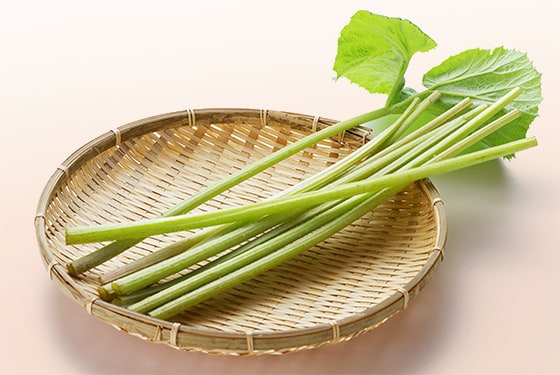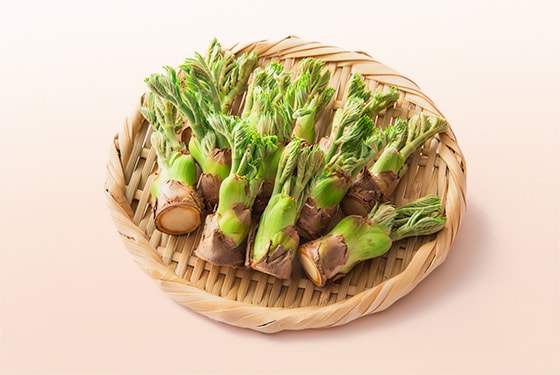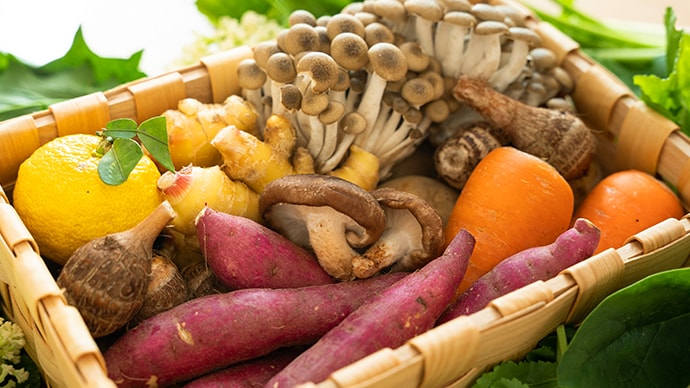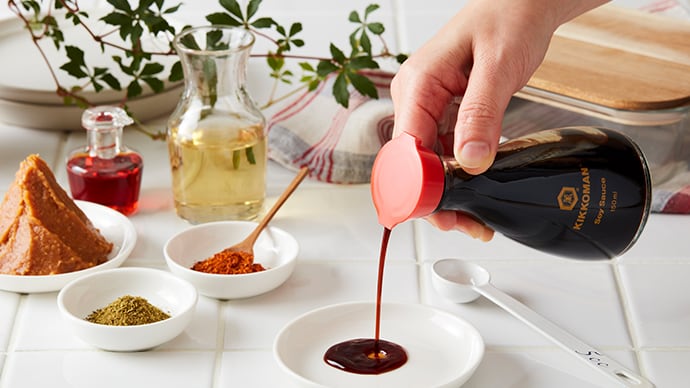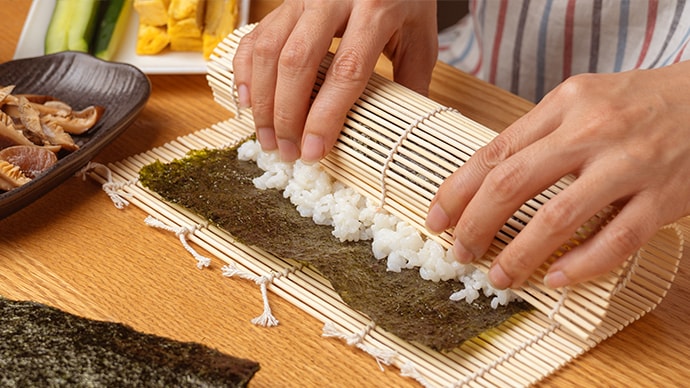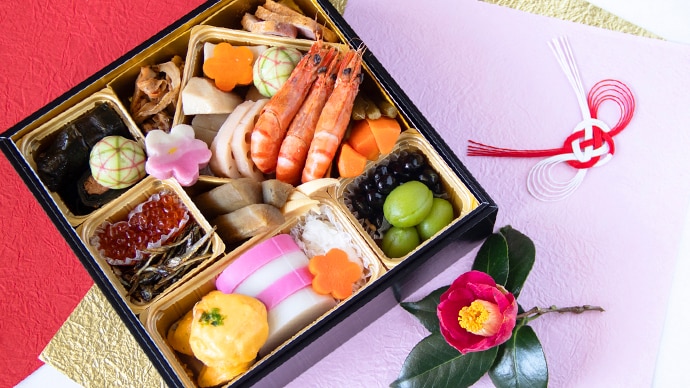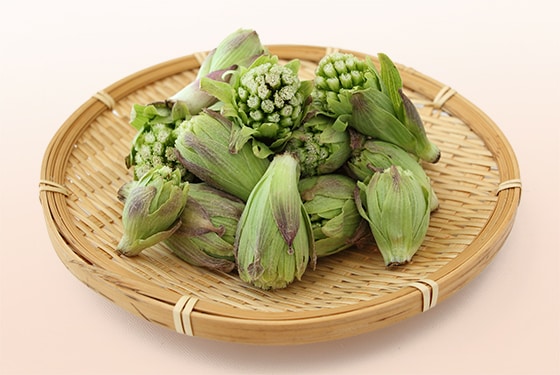
Flower buds from the wild "fuki" butterbur native to Japan. An iconic spring flavor
What is fukinotou?
Fukinotou / Japanese butterbur shoots (ふきのとう in Japanese) are frequently found when the snows thaw from February to March and have been well-loved as a sign of spring for a very long time. With their distinctive bitterness and aroma, they are eaten often as tempura or in "aemono" (dressed dishes often made with fresh seasonal vegetables).
Nutrition facts
Fukinotou are rich in potassium, which is said to be useful in preventing high blood pressure and relieving swelling, and are rich in dietary fiber and folic acid. They also contain vitamin C, calcium, and vitamin K. The bitterness of fukinotou come from polyphenols such as ketphenol, fukinolic acid, and plant alkaloids. Plant alkaloids strengthen liver function and also have a detoxifying effect.
However, fukinotou contain natural toxins such as pyrrolizidine alkaloids, so the atringency must be removed before eating. Pyrrolizidine alkaloids are water-soluble, so by removing the astringency in water, the bitterness will be gone and shoots can be eaten safely.
Storage to prevent food loss
Wrap in a slightly moistened paper towel then put in a plastic bag and store in the refrigerator. Can also be stored in the freezer after boiling to remove the bitterness. Wipe away the moisture then wrap small quantities in plastic wrap and freezer bags, then store in the freezer.
Trivia
Make sure to pick butterbur shoots with the buds firmly closed. When the flowers sprout, they will become too tough and much more bitter.
Caution
Contains petasitenine which is a bitter flavor with poisonous properties, so ensure you boil first to remove this when preparing to eat. That being said, there has never been a warning of this potential health hazard in Japan, so there should not be an issue when eaten in moderation.


